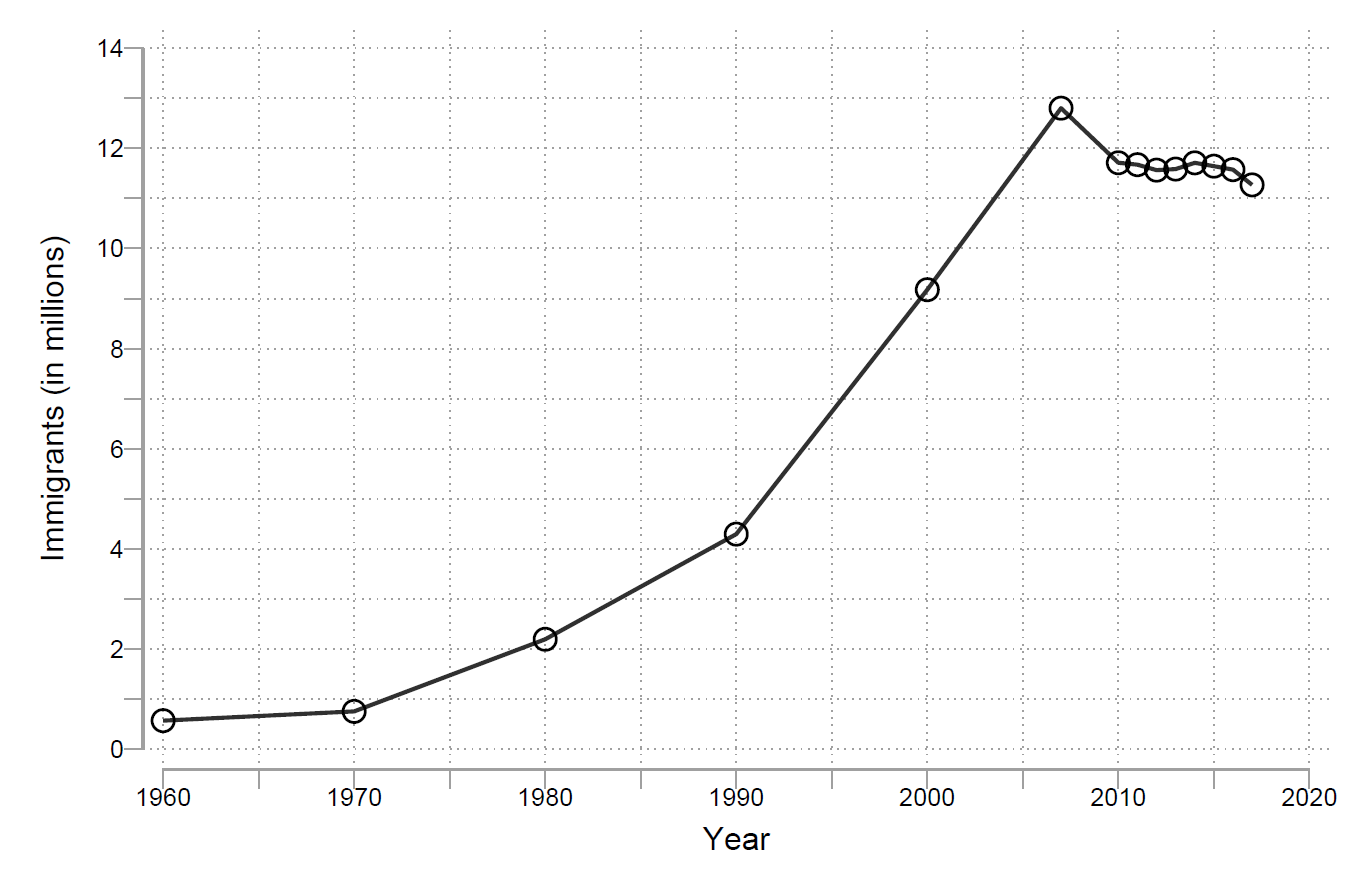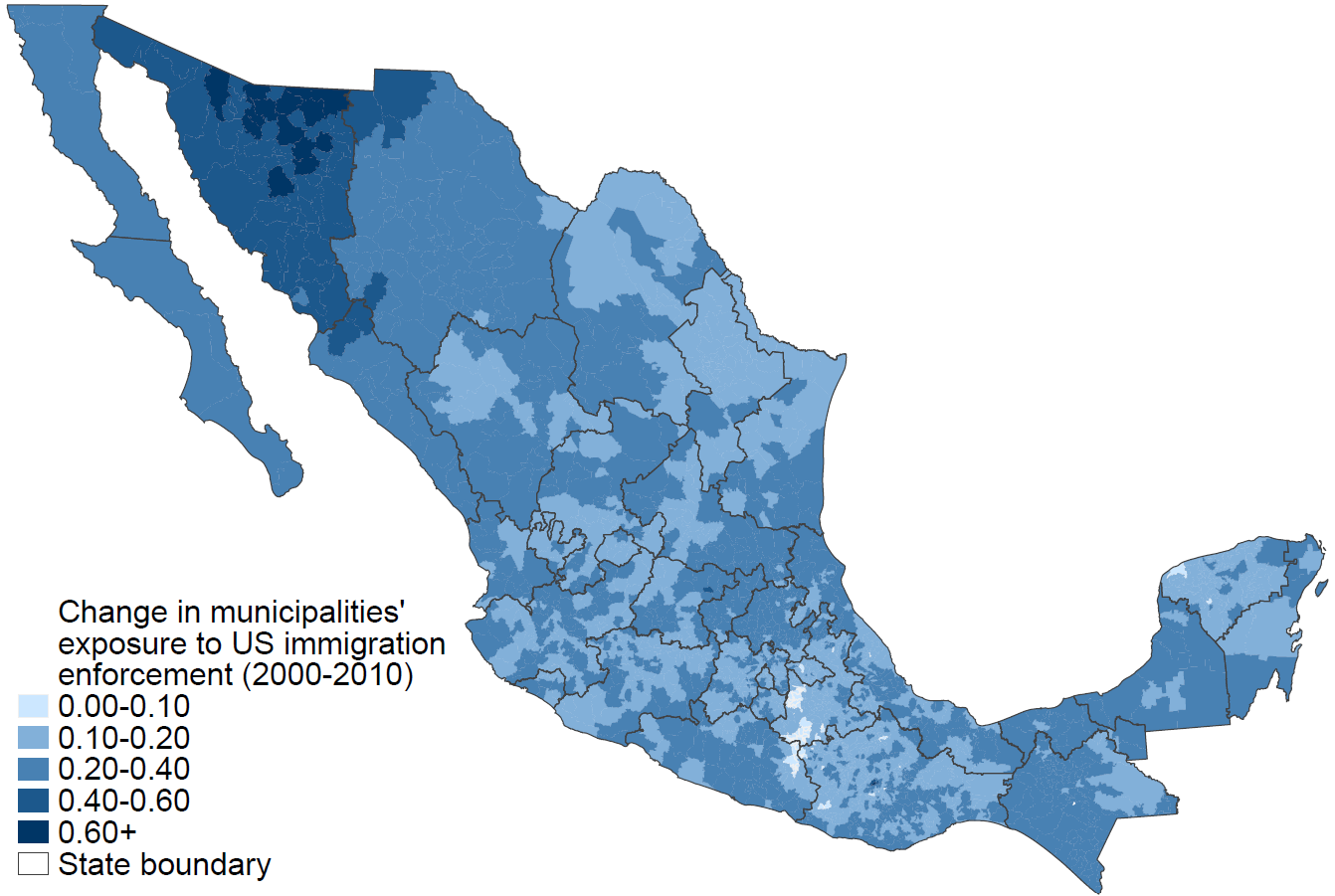
Evidence from Mexico shows how migrants can foster local economic development after returning to their countries of origin
International migration has allowed millions of people in the developing world to escape poverty. Extensive empirical research consistently highlights the substantial positive effects of reducing migration barriers for migrants and the communities involved (Clemens 2011). Despite the benefits of migration, recent political rhetoric across the globe reveals that both home and host countries remain wary of the cross-border movement of people. Sending regions worry about human capital flight in the form of skilled emigration. At the same time, receiving countries voice concerns about their national security, changing demographics, and presumed strains on domestic labour markets. These concerns have become deeply entrenched, yet the widespread phenomenon of migrants intending to return to their home countries is frequently omitted. The narrative surrounding international migration therefore remains incomplete, perpetuating misconceptions and fears.
Beyond brain drain and remittances: Return migration
Out of the 281 million individuals living outside their countries of birth (McAuliffe and Triandafyllidou 2021), about 25% are expected to return to their places of origin after studying or working abroad (Azose and Raftery 2019, Dustmann and Görlach 2016). Many migrants, when they do return, go back with assets in the form of savings and human capital acquired through formal schooling, new social connections, employment opportunities, and exposure to new skills.
Repatriated savings represent an opportunity to fund new business ventures, improve household consumption, insure against shocks, and invest in human capital formation. Human capital and job experience acquired abroad can increase workers’ productivity and innovation (Bahar et al. 2019), potentially leading to higher labour returns in the form of wage premiums (Reinhold and Thom 2013). Return migrants also exhibit higher rates of entrepreneurship than non-migrants (Dustmann and Kirchkamp 2002, Marchetta 2012). These improvements can generate positive spillovers, benefiting not only the migrants themselves but also contributing to local economic development through, for example, direct investments, job creation, and increased economic dynamism.
The case of Mexico
The publication of the 2010 Mexican census marked a turning point in the country’s history. For the first time, the number of individuals returning to Mexico surpassed those migrating to the US (Passel et al. 2012). Since the adoption of the 1942 “Mexican Farm Labour Program” or “Bracero Program” to address labour shortages in the US, and even after the expiration of the programme in 1964, migration from Mexico to the US grew steadily at an average of 80% per decade between 1950 and 2000. Then, at the turn of the century, a confluence of factors, including intensified US immigration enforcement and a deteriorating labour market triggered by the Global Crisis, meant that the number of Mexican-born immigrants in the US peaked in 2007 at 12.8 million. Since then, the number declined by over a million people within the next few years (Figure 1), and the examination of census data reveals a notable increase in return migration across Mexico in the 2000s (Figure 2).
Figure 1: Mexican-born Immigrants in the US between 1960 and 2017

Notes: Reproduced from Bucheli and Fontenla (2022)
At the beginning of the period, limited return migration was concentrated in specific municipalities, but by the end of the decade, the trend had expanded significantly, with over a million migrants returning to municipalities of origin nationwide.
Figure 2: Return migration by municipality in 2000 and 2010: Proportion of households with at least one return migrant.

Notes: Reproduced from Bucheli and Fontenla (2022)
Estimating the impact of return migration
In our study (Bucheli and Fontenla 2022), we examine the implications of large-scale return migration for the economic development of communities of origin. To estimate the impact, we conduct the analysis in two steps. First, we use changes in state-level immigration enforcement policies in the US to model return migration rates at the municipality level in Mexico. Then, we estimate the impact of the predicted return migration on several economic development indicators. This methodology allows us to account for the possibility that improving economic conditions in Mexico might have encouraged at least some migrants to return.
To link policy changes in US destination states to Mexican municipalities, we use consular cards issued by the Mexican government to its citizens in the US. The information on migrants’ places of birth and residence in the cards enables us to construct an index measuring the change in the exposure of migrants to restrictive US policies across each municipality. As depicted in Figure 3, regions near the border were particularly exposed to the intensification of immigration enforcement, and municipalities in these states also experienced significant increases in return migration, as illustrated in Figure 2.
Figure 3: Change in Mexican municipalities’ exposure to US immigration enforcement between 2000 and 2010

Notes: Reproduced from Bucheli and Fontenla (2022)
We estimate the effect of return migration rates on municipality economic development, as captured primarily by the Social Lag Index (SLI). The SLI is a comprehensive indicator that combines information on deprivation in various dimensions, including education, health, housing quality, access to public services, and asset ownership. The inspection of this indicator in Figure 4 reveals a significant decline in the average level of social lag (and therefore an improvement in economic development) in municipalities throughout the 2000s. The northern border region, which as we showed, experiencedfaced substantial increases in return migration, experienced particularly pronounced declines in the SLI.
Figure 4: Social Lag Index by municipality in 2010 and 2010

Notes: Reproduced from Bucheli and Fontenla (2022)
Our analysis finds compelling evidence that the return migration has indeed led to improvements in local economic development, as indicated by a decline in municipalities’ social lag, even when accounting for other development-related factors. We also observe a drop in food poverty and capability poverty, indicating a decrease in the proportion of households unable to acquire a basic food basket and essential health and education expenses.
Differential impact by types of municipalities
We also conduct analyses to learn about the differential effects on various types of municipalities. We discover that the benefits are not exclusive to more prosperous regions or those with more active migration networks. Even when excluding urban areas, border states, and regions with the highest remittance rates, we observe significant contributions of return migration to community development. These findings point to an overall improvement in the quality of life in areas where return migrants chose to resettle.
Mechanisms of improvement
To understand the factors underlying the observed improvement in economic development, we explore the impact on various labour, health, and education outcomes. Our analysis finds that municipalities with higher return migration rates experienced an increase in per capita income and the share of the workforce employed in the manufacturing sector. We also observe improvements in the population share with access to healthcare services, enrolment in school, completion of primary education, and literacy rates.
Lastly, we consider the possibility that other factors such as a surge in remittances or economic liberalisation - and not return migration - are driving economic development. However, our analysis reveals that the increase in return migration was accompanied by a decline in migration, remittances, and municipalities’ trade openness - factors that typically contribute to development. The fact that we still find positive effects on development supports the role of return migration beyond the flow of resources from abroad.
Implications for public policy
Almost a century ago, Mexican social scientist Manuel Gamio likened the journey of his countrymen to the United States as equivalent to attending a “giant university” (Gamio 1935). Today, empirical evidence supports this argument, showing that international migration has the potential to contribute to prosperity at home, even after migrants return. These findings carry important policy implications for Mexico and other countries with global diasporas, and suggest that neglecting the transitory nature of many migrants’ experiences underestimates the effects of international migration on economic development.
Public policy that guarantees migrants’ safety and well-being, establishes fiscal incentives for asset repatriation, creates formal labour opportunities, promotes social networks, and collaborates in the success of entrepreneurial projects may facilitate the reintegration of migrants, and allow their capital investments to bolster local development. Without this framework, Mexico and other developing countries may be missing out on a critical opportunity to support return migration as a source of innovation and prosperity.
References
Azose, J J, and A E Raftery (2019), "Estimation of emigration, return migration, and transit migration between all pairs of countries", Proceedings of the National Academy of Sciences 116(1): 116–122.
Bahar, D, A Hauptmann, C Özgüzel, and H Rapoport (2019), “Migration and post-conflict reconstruction”, VoxDev.org, 9 September.
Bucheli, J R, and M Fontenla (2022), "The Impact of Return Migration on Economic Development", The Review of Economics and Statistics 1–45.
Clemens, M A (2011), "Economics and Emigration: Trillion-Dollar Bills on the Sidewalk?", Journal of Economic Perspectives 25(3): 83–106.
Dustmann, C, and J S Görlach (2016), "The Economics of Temporary Migrations", Journal of Economic Literature 54(1): 98–136.
Dustmann, C, and O Kirchkamp (2002), "The optimal migration duration and activity choice after re-migration", Journal of Development Economics 67(2): 351–372.
Gamio, M (1935). Hacia un México Nuevo: Problemas Sociales. Instituto Nacional Indigenista.
Marchetta, F (2012), "Return migration and the survival of entrepreneurial activities in Egypt", World Development 40(10): 1999–2013.
McAuliffe, M, and A Triandafyllidou (Eds.) (2021). World Migration Report 2022. International Organization for Migration (IOM).
Passel, J, D Cohn, and A Gonzalez-Barrera (2012), "Net Migration from Mexico Falls to Zero—and Perhaps Less", In Pew Research Center. Pew Research Center.
Reinhold, S, and K Thom (2013), "Migration Experience and Earnings in the Mexican Labor Market", Journal of Human Resources 48(3): 768–820.


